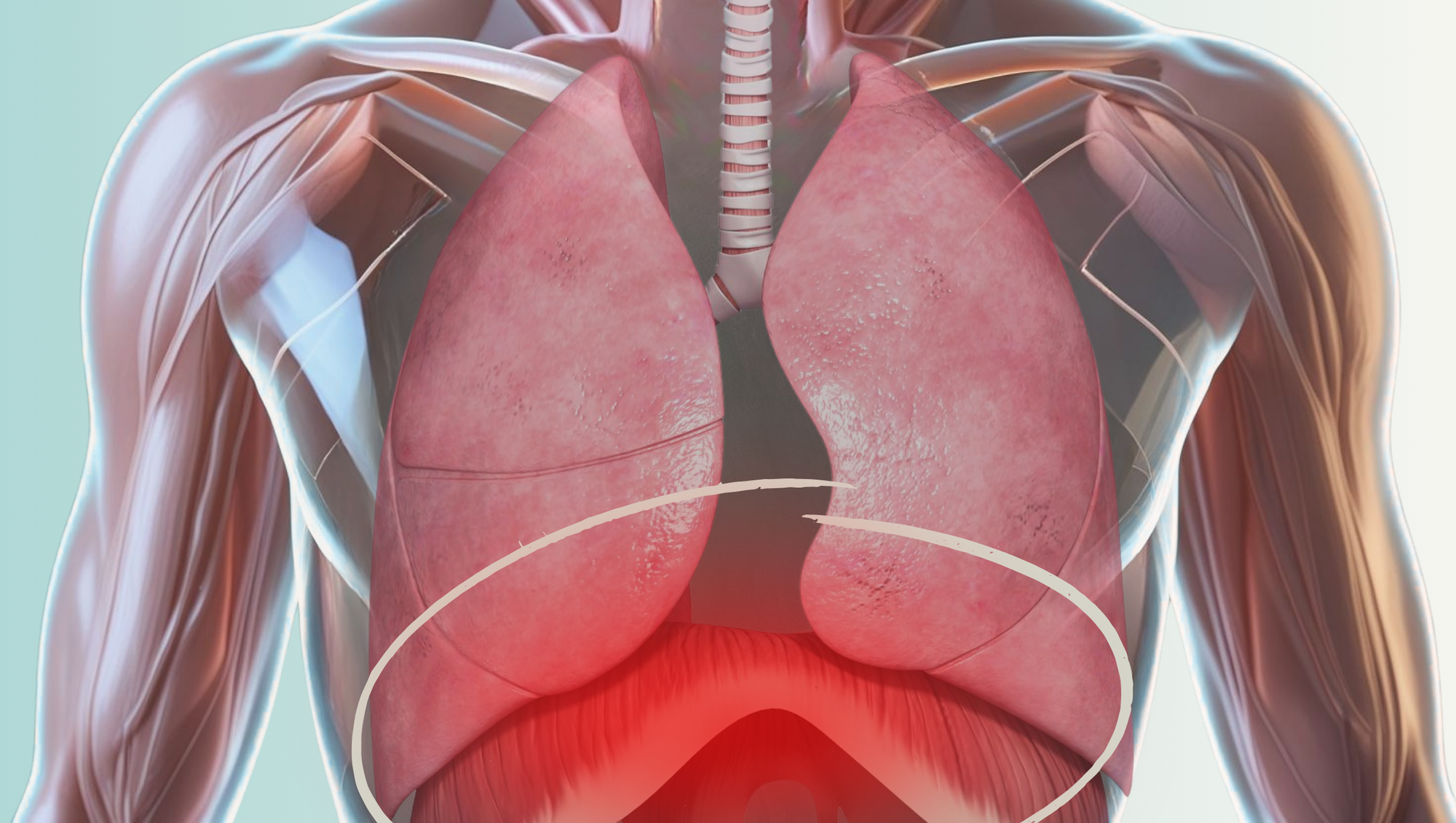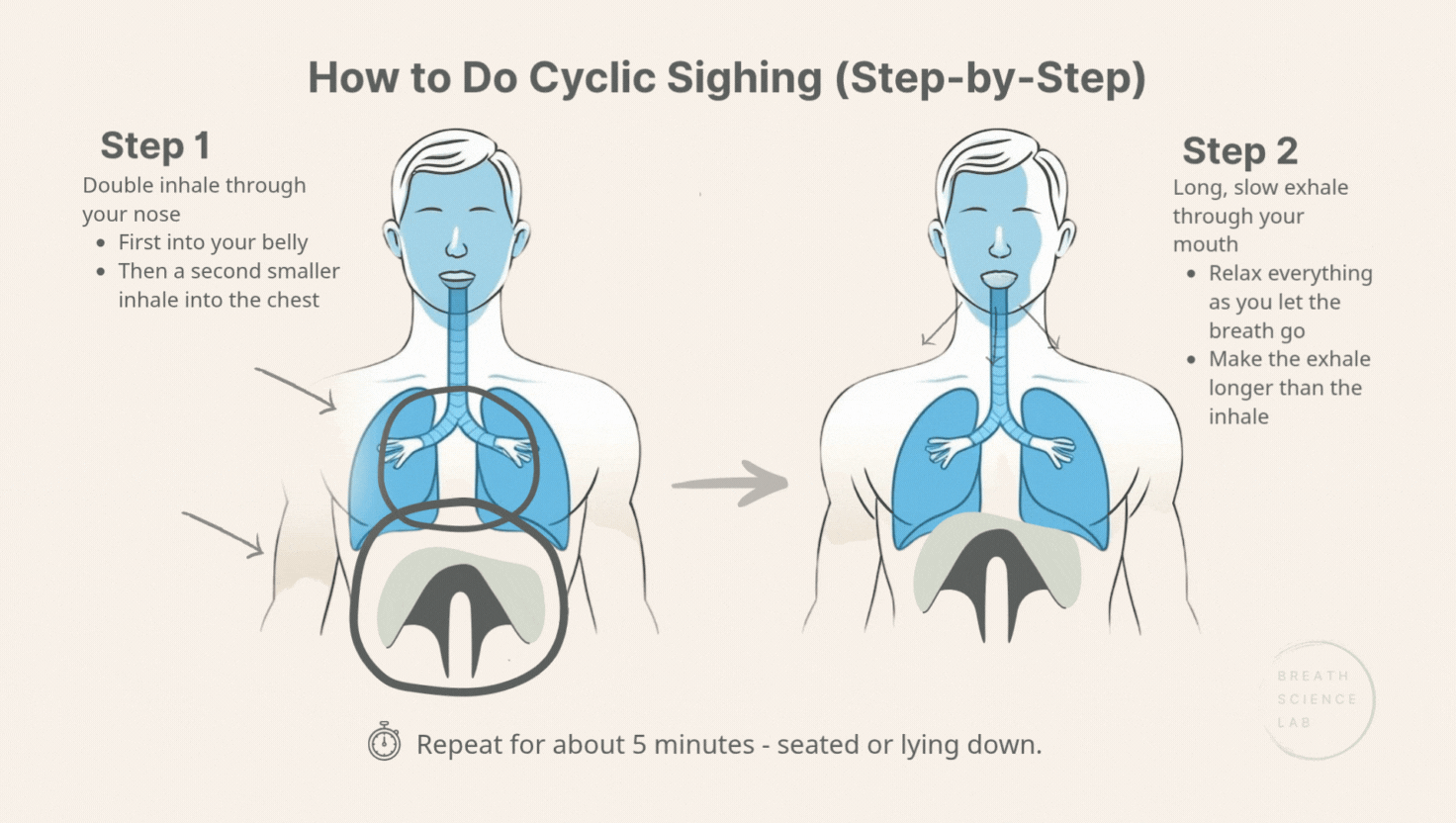Can’t Breathe? It Could Be a Tight Diaphragm from Anxiety

If you're like me - you might have had times where you can't take a deep breath - you know something is wrong. You might have even gone to your family doctor, got sent for lung tests - only to be told "your lungs are fine, Sir."
Left with frustration and even more anxiety - you do more research, go down the cancer rabbit hole… and now you feel like you're dying, nobody gives a sh*t, and they're all a bunch of unqualified quacks.
Well, I have some good news for you - it might not be your lungs at all.
That sensation of chest tightness, shallow breathing, or being hungry for air is often caused by a tight diaphragm fueled by anxiety. And there’s a science-backed way that helps to fix this.
Chest Tightness: The Most Common Symptom of a Tight Diaphragm
Let’s get specific. The most common symptom of a tight diaphragm from anxiety is a heavy, restricted feeling in your chest. It can feel like something is pushing down on your chest… like you can't do a full inhale. Sometimes it feels like you're not getting enough air - even though you seem to be breathing normally.
Most people don’t think of their diaphragm. Instead, they search for:
- “chest tightness”
- “can’t breathe”
- “shortness of breath”
- “tight chest breathing problems”
But here’s what’s actually happening…
Anxiety Restricts Your Diaphragm’s Movement (And You Feel It in Your Chest)
When we’re stuck in fight-or-flight, the diaphragm - our main breathing muscle - stops moving freely. It tightens up. Instead of expanding and contracting like it should, it stays braced.
This tension leads to shallow breathing and pressure in the chest and belly.
And it creates a feedback loop - the more restricted your breath, the more anxious you feel.
Even though your tight diaphragm sits below the lungs, the symptoms show up higher - in the chest, throat, shoulders, or neck.
Stanford’s 2023 Study: The Breathwork That Actually Heals
In 2023, researchers at Stanford University studied 108 participants over 28 days. They tested three breathing techniques and compared them to mindfulness meditation. The three techniques were: cyclic hyperventilation, box breathing and cyclic sighing.
Published in Cell Reports Medicine, this randomized controlled trial measured:
- Respiratory rate (how fast you breathe - a direct sign of tension or calm)
- Heart rate variability (HRV) - your body’s resilience to stress
- Subjective anxiety levels
The technique that came out on top? Cyclic sighing.
It led to the biggest drop in respiratory rate, the greatest mood improvements, and the most consistent anxiety relief.
Even more impressive: They found that - the slower people breathed, the better they felt.
The study found a clear link - lower respiratory rate = lower anxiety.

How to Do Cyclic Sighing (Step-by-Step)
This isn’t complicated. It’s not intense.
And it doesn’t require belief - just a few minutes of your time.
Here’s how to do it:
Step 1: Double inhale through your nose
- First into your belly
- Then a second smaller inhale into the chest
Step 2: Long, slow exhale through your mouth
- Relax everything as you let the breath go
- Make the exhale longer than the inhale
That’s one round. Repeat for about 5 minutes - seated or lying down.

What it does:
- Fully activates your diaphragm
- Stimulates the vagus nerve
- Drops your system into parasympathetic recovery mode
How to Know If It’s Working
You won’t have to guess. Here’s how your body will respond:
You may feel that tightness in your chest begin to soften. Your body relaxes, then your mind slows down.
If you track your HRV, you could even see it improve over time - but often the biggest shift is internal. Eventually - with time, your breath might slow down without you putting in any effort. Some people notice they wake up feeling like their breath flows more easily. Your body will give you signs.
Break the Cycle: Breathwork That Targets the Diaphragm
If meditation hasn’t helped… if every test says “you’re fine”... if you're still stuck in that breathless, tight-chested loop…
You’re not broken. You’ve just never been taught how to work with your diaphragm.
This is where you start: cyclic sighing.
Give it five quiet minutes a day. Breathe with intention. Let your system shift.
It doesn’t have to be perfect - just intentional.
Your body already knows what to do. You’re just reminding it that it’s safe again. And do yourself a favor: put the phone down for a bit. The algorithm is quietly stealing your calm.
Let me know if you tried any of these studied techniques down below, or if you have something better.
Want to Go Deeper?
- Download the Parasympathetic Reset Guide
- Take the Breathwork Readiness Self-Assessment
- Read: When Meditation Doesn’t Work – Try This 5-Minute Reset
Study Referenced: https://pmc.ncbi.nlm.nih.gov/articles/PMC9873947/

